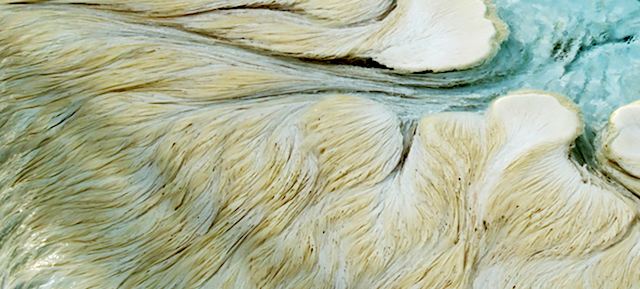 A rover scanning the surface of Mars for evidence of life might want to check for rocks that look like pasta, researchers report in the journal Astrobiology.
A rover scanning the surface of Mars for evidence of life might want to check for rocks that look like pasta, researchers report in the journal Astrobiology.
The bacterium that controls the formation of such rocks on Earth is ancient and thrives in harsh environments that are similar to conditions on Mars, said University of Illinois geology professor Bruce Fouke, who led the new, NASA-funded study.
“It has an unusual name, Sulfurihydrogenibium yellowstonense,” he said. “We just call it ‘Sulfuri.’”
The bacterium belongs to a lineage that evolved prior to the oxygenation of Earth roughly 2.35 billion years ago, Fouke said. It can survive in extremely hot, fast-flowing water bubbling up from underground hot springs. It can withstand exposure to ultraviolet light and survives only in environments with extremely low oxygen levels, using sulfur and carbon dioxide as energy sources.
“Taken together, these traits make it a prime candidate for colonizing Mars and other planets,” Fouke said. And because it catalyzes the formation of crystalline rock formations that look like layers of pasta, it would be a relatively easy life form to detect on other planets, he said. (…)
“If we see the deposition of this kind of extensive filamentous rock on other planets, we would know it’s a fingerprint of life,” Fouke said. “It’s big and it’s unique. No other rocks look like this. It would be definitive evidence of the presences of alien microbes.” [More at links]








